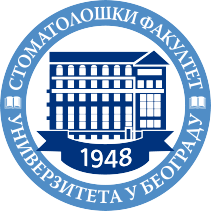MAPK activation in cerebellar basket cell terminals after harmaline treatment
Само за регистроване кориснике
2005
Чланак у часопису (Објављена верзија)

Метаподаци
Приказ свих података о документуАпстракт
The mitogen-activated protein kinases (MAPKs) are a family of signal transduction mediators that regulate a number of cellular activities, including cell growth and proliferation, differentiation and survival, via phosphorylation (activation) of protein kinases. MAPKs are also recruited during synaptic plasticity and remodeling. In the present study we used Western blotting and immunohistochemistry to examine the effects of harmaline administration on the phosphorylation state of three MAPKs: the extracellular signalregulated kinase (ERK1/2), c-jun-N-terminal kinase/stress-activated protein kinase (JNK/SAPK), and p38 MAPK. Harmaline is a tremorigenic drug known to induce enhanced and rhythmic firing of the inferior olive. In rats, synchronous activity of the inferior olive cells induced by harmaline administered for four days from postnatal day 9 to 12 resulted in prolonged maintenance of polyinnervation of Purkinje cells by climbing fibers (axons of olivary cells). Immunohistochemistr...y showed small but sustained cytoplasmic positivity to phospho-ERK in Purkinje cells and a strong signal for phospho-ERK in the "pinceaux," terminals of the interneuronal basket cells onto Purkinje cells. A similar pattern was observed for JNK/SAPK, while no changes in p38 were noticed. Thus, it was revealed that the activation of two members of the MAPK family in these inhibitory presynaptic terminals is also one consequence of synchronous olivary input to Purkinje cells known to affect developmental plasticity.
Кључне речи:
cerebellum / Purkinje cells / baskets cells / ERK1/2 / SAPKИзвор:
Biophysics from Molecules to Brain: in Memory of Radoslav K. Andjus, 2005, 1048, 411-417Издавач:
- New York Acad Sciences, New York
DOI: 10.1196/annals.1342.051
ISSN: 0077-8923
PubMed: 16154964
WoS: 000233712300048
Scopus: 2-s2.0-25144441177
Колекције
Институција/група
Stomatološki fakultetTY - JOUR AU - Milašin, Jelena AU - Buffo, Annalisa AU - Carulli, Daniela AU - Andjus, P AU - Strata, Piergiorgio PY - 2005 UR - https://smile.stomf.bg.ac.rs/handle/123456789/1245 AB - The mitogen-activated protein kinases (MAPKs) are a family of signal transduction mediators that regulate a number of cellular activities, including cell growth and proliferation, differentiation and survival, via phosphorylation (activation) of protein kinases. MAPKs are also recruited during synaptic plasticity and remodeling. In the present study we used Western blotting and immunohistochemistry to examine the effects of harmaline administration on the phosphorylation state of three MAPKs: the extracellular signalregulated kinase (ERK1/2), c-jun-N-terminal kinase/stress-activated protein kinase (JNK/SAPK), and p38 MAPK. Harmaline is a tremorigenic drug known to induce enhanced and rhythmic firing of the inferior olive. In rats, synchronous activity of the inferior olive cells induced by harmaline administered for four days from postnatal day 9 to 12 resulted in prolonged maintenance of polyinnervation of Purkinje cells by climbing fibers (axons of olivary cells). Immunohistochemistry showed small but sustained cytoplasmic positivity to phospho-ERK in Purkinje cells and a strong signal for phospho-ERK in the "pinceaux," terminals of the interneuronal basket cells onto Purkinje cells. A similar pattern was observed for JNK/SAPK, while no changes in p38 were noticed. Thus, it was revealed that the activation of two members of the MAPK family in these inhibitory presynaptic terminals is also one consequence of synchronous olivary input to Purkinje cells known to affect developmental plasticity. PB - New York Acad Sciences, New York T2 - Biophysics from Molecules to Brain: in Memory of Radoslav K. Andjus T1 - MAPK activation in cerebellar basket cell terminals after harmaline treatment VL - 1048 SP - 411 EP - 417 DO - 10.1196/annals.1342.051 ER -
@article{
author = "Milašin, Jelena and Buffo, Annalisa and Carulli, Daniela and Andjus, P and Strata, Piergiorgio",
year = "2005",
abstract = "The mitogen-activated protein kinases (MAPKs) are a family of signal transduction mediators that regulate a number of cellular activities, including cell growth and proliferation, differentiation and survival, via phosphorylation (activation) of protein kinases. MAPKs are also recruited during synaptic plasticity and remodeling. In the present study we used Western blotting and immunohistochemistry to examine the effects of harmaline administration on the phosphorylation state of three MAPKs: the extracellular signalregulated kinase (ERK1/2), c-jun-N-terminal kinase/stress-activated protein kinase (JNK/SAPK), and p38 MAPK. Harmaline is a tremorigenic drug known to induce enhanced and rhythmic firing of the inferior olive. In rats, synchronous activity of the inferior olive cells induced by harmaline administered for four days from postnatal day 9 to 12 resulted in prolonged maintenance of polyinnervation of Purkinje cells by climbing fibers (axons of olivary cells). Immunohistochemistry showed small but sustained cytoplasmic positivity to phospho-ERK in Purkinje cells and a strong signal for phospho-ERK in the "pinceaux," terminals of the interneuronal basket cells onto Purkinje cells. A similar pattern was observed for JNK/SAPK, while no changes in p38 were noticed. Thus, it was revealed that the activation of two members of the MAPK family in these inhibitory presynaptic terminals is also one consequence of synchronous olivary input to Purkinje cells known to affect developmental plasticity.",
publisher = "New York Acad Sciences, New York",
journal = "Biophysics from Molecules to Brain: in Memory of Radoslav K. Andjus",
title = "MAPK activation in cerebellar basket cell terminals after harmaline treatment",
volume = "1048",
pages = "411-417",
doi = "10.1196/annals.1342.051"
}
Milašin, J., Buffo, A., Carulli, D., Andjus, P.,& Strata, P.. (2005). MAPK activation in cerebellar basket cell terminals after harmaline treatment. in Biophysics from Molecules to Brain: in Memory of Radoslav K. Andjus New York Acad Sciences, New York., 1048, 411-417. https://doi.org/10.1196/annals.1342.051
Milašin J, Buffo A, Carulli D, Andjus P, Strata P. MAPK activation in cerebellar basket cell terminals after harmaline treatment. in Biophysics from Molecules to Brain: in Memory of Radoslav K. Andjus. 2005;1048:411-417. doi:10.1196/annals.1342.051 .
Milašin, Jelena, Buffo, Annalisa, Carulli, Daniela, Andjus, P, Strata, Piergiorgio, "MAPK activation in cerebellar basket cell terminals after harmaline treatment" in Biophysics from Molecules to Brain: in Memory of Radoslav K. Andjus, 1048 (2005):411-417, https://doi.org/10.1196/annals.1342.051 . .


